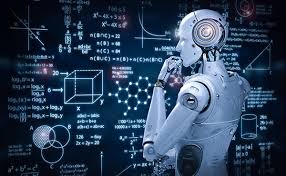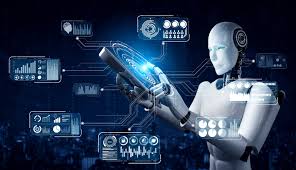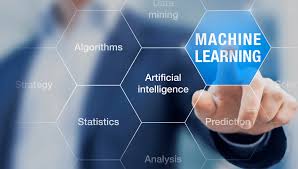This article explores the profound impact of AI and Machine Learning across various sectors. It delves into their concepts, applications, challenges, and future prospects. Through in – depth analysis and real – world examples, it aims to provide a comprehensive understanding of these revolutionary technologies.
Introduction

In the contemporary technological landscape, AI (Artificial Intelligence) and Machine Learning have emerged as the driving forces behind numerous innovations. AI refers to the simulation of human intelligence processes by machines, while Machine Learning is a subset of AI that enables machines to learn from data without being explicitly programmed. These technologies are transforming industries, from healthcare to finance, and are set to redefine the future of work and society.
The Basics of AI and Machine Learning
AI can be classified into two main types: Narrow AI and General AI. Narrow AI is designed to perform specific tasks, such as facial recognition or voice assistants. General AI, on the other hand, has the ability to understand, learn, and apply knowledge across a wide range of tasks, similar to human intelligence. However, General AI is still largely in the realm of research.
Machine Learning algorithms are the core of AI systems. There are three main types of Machine Learning algorithms: supervised learning, unsupervised learning, and reinforcement learning.
| Type of Machine Learning | Description | Example |
|---|---|---|
| Supervised Learning | The algorithm is trained on labeled data, where the input and the corresponding output are known. It then predicts the output for new input data. | Predicting housing prices based on historical data of house features and prices. |
| Unsupervised Learning | The algorithm works with unlabeled data and tries to find patterns or groupings within the data. | Segmenting customers into different groups based on their purchasing behavior. |
| Reinforcement Learning | The algorithm learns by interacting with an environment and receiving rewards or penalties based on its actions. | Training a robot to navigate a maze. |
Applications of AI and Machine Learning
Healthcare

In healthcare, AI and Machine Learning are revolutionizing diagnosis, treatment, and drug discovery. Machine Learning algorithms can analyze medical images, such as X – rays and MRIs, to detect diseases at an early stage. For example, some algorithms can detect early signs of cancer with high accuracy, potentially saving lives. AI – powered chatbots are also being used to provide patients with basic medical advice and triage services.
Finance
The finance industry benefits greatly from AI and Machine Learning. These technologies are used for fraud detection, risk assessment, and algorithmic trading. Machine Learning algorithms can analyze large volumes of financial data to identify patterns that may indicate fraudulent transactions. In algorithmic trading, AI systems can make split – second decisions based on market trends, potentially maximizing profits.
Transportation
Self – driving cars are a prime example of the application of AI and Machine Learning in transportation. These vehicles use sensors and Machine Learning algorithms to perceive their environment, make decisions, and navigate safely. This technology has the potential to reduce traffic accidents, improve traffic flow, and provide greater mobility for people.
| Industry | Application of AI & Machine Learning |
|---|---|
| Healthcare | Disease diagnosis from medical images, patient triage with chatbots |
| Finance | Fraud detection, risk assessment, algorithmic trading |
| Transportation | Self – driving cars |
Challenges in AI and Machine Learning
Despite their numerous advantages, AI and Machine Learning also face several challenges. One of the main issues is data quality. Machine Learning algorithms rely heavily on large amounts of high – quality data for training. If the data is incomplete, inaccurate, or biased, the performance of the algorithms will be affected. For example, a facial recognition system trained on a dataset with a predominantly white population may perform poorly on people of other ethnicities.
Another challenge is the ethical and legal implications. AI systems can make decisions that have significant impacts on people’s lives, such as in the case of autonomous vehicles or loan approval algorithms. There is a need to ensure that these decisions are fair, transparent, and accountable. Additionally, issues related to data privacy and security are of utmost importance, as AI systems handle large amounts of sensitive information.
The lack of skilled professionals is also a hurdle. Developing and implementing AI and Machine Learning systems requires a high level of technical expertise. There is currently a shortage of data scientists, AI engineers, and other related professionals in the job market.
Technological Advancements in AI and Machine Learning

The field of AI and Machine Learning is constantly evolving. Deep Learning, a sub – field of Machine Learning, has made significant progress in recent years. Deep neural networks, which are inspired by the structure of the human brain, have achieved state – of – the – art results in areas such as image recognition, natural language processing, and speech recognition.
Generative Adversarial Networks (GANs) are another exciting development. GANs consist of two neural networks: a generator and a discriminator. They are used to generate new data that is similar to the training data, such as generating realistic images or text.
Quantum computing also holds great promise for AI and Machine Learning. Quantum computers have the potential to solve complex problems much faster than traditional computers, which could significantly accelerate the training of Machine Learning algorithms.
Future Prospects of AI and Machine Learning
The future of AI and Machine Learning is full of possibilities. In the next few years, we can expect to see more widespread adoption of these technologies in various industries. For example, in agriculture, AI – powered drones and sensors can be used to monitor crop health, optimize irrigation, and detect pests.
In education, AI – based tutoring systems can provide personalized learning experiences for students. These systems can adapt to the individual needs and learning pace of each student, potentially improving educational outcomes.
However, to fully realize the potential of AI and Machine Learning, there needs to be a balance between technological innovation and ethical considerations. Governments, industry leaders, and researchers need to work together to develop appropriate regulations and guidelines.
AI and Machine Learning are powerful technologies that are reshaping the world as we know it. They offer numerous benefits across various industries, from healthcare to transportation. However, they also face challenges such as data quality, ethical issues, and a shortage of skilled professionals. With continued technological advancements and a collaborative approach to addressing these challenges, AI and Machine Learning will continue to drive innovation and transform society in the years to come.
